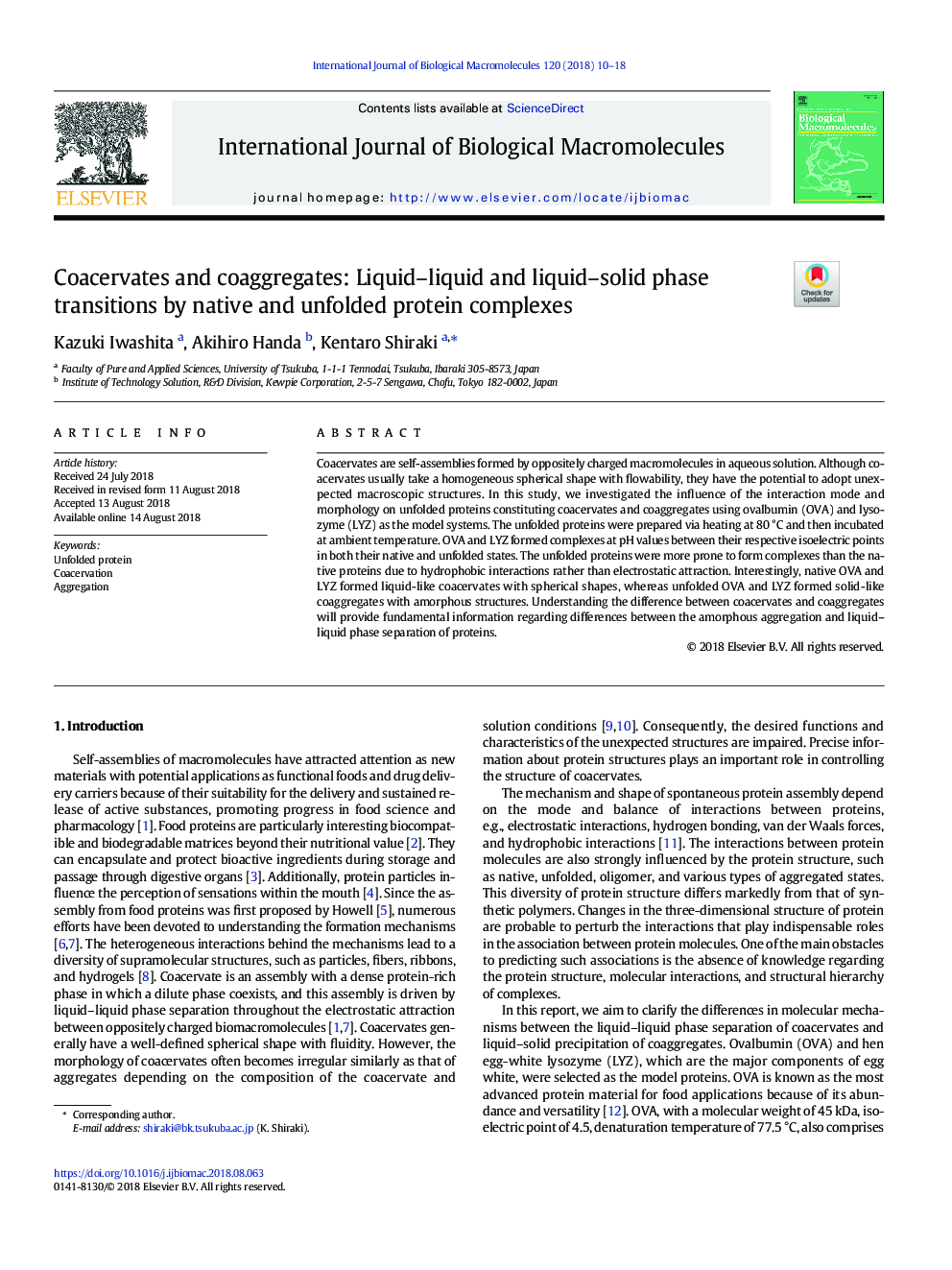| Article ID | Journal | Published Year | Pages | File Type |
|---|---|---|---|---|
| 8943695 | International Journal of Biological Macromolecules | 2018 | 9 Pages |
Abstract
Coacervates are self-assemblies formed by oppositely charged macromolecules in aqueous solution. Although coacervates usually take a homogeneous spherical shape with flowability, they have the potential to adopt unexpected macroscopic structures. In this study, we investigated the influence of the interaction mode and morphology on unfolded proteins constituting coacervates and coaggregates using ovalbumin (OVA) and lysozyme (LYZ) as the model systems. The unfolded proteins were prepared via heating at 80â¯Â°C and then incubated at ambient temperature. OVA and LYZ formed complexes at pH values between their respective isoelectric points in both their native and unfolded states. The unfolded proteins were more prone to form complexes than the native proteins due to hydrophobic interactions rather than electrostatic attraction. Interestingly, native OVA and LYZ formed liquid-like coacervates with spherical shapes, whereas unfolded OVA and LYZ formed solid-like coaggregates with amorphous structures. Understanding the difference between coacervates and coaggregates will provide fundamental information regarding differences between the amorphous aggregation and liquid-liquid phase separation of proteins.
Related Topics
Life Sciences
Biochemistry, Genetics and Molecular Biology
Biochemistry
Authors
Kazuki Iwashita, Akihiro Handa, Kentaro Shiraki,
